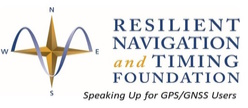The devastating potential of an extreme solar storm and what the White House is doing about it.
By Jason Samenow October 29 at 1:32 PM Washingtopost.com
Weather is not limited to the clouds, wind, extremes of heat and cold and precipitation systems that we experience on Earth. The broiling surface of the sun generates its own weather, or space weather, frequently unleashing waves of plasma that bombard the Earth’s atmosphere.
A principal concern is the following: At some point in our lifetimes, the sun could unleash a dangerous surge of magnetically-charged plasma that could severely damage or destroy critically important electric power systems, satellites, spacecraft and telecommunications.
The White House, realizing that an extreme solar storm could jeopardize the nation’s vitality and security, released a strategy and multi-agency plan on Thursday to prepare for and coordinate responses to the space weather threat.
“The plan was motivated by a recognition that we need a cohesive national network to build resilience [to space weather] and to determine what we need to know,” said Bill Murtagh, assistant director for space weather at White House Office of Science and Technology Policy (OSTP). “This is a real and present danger, this is a real threat.”
The plan’s development, co-chaired by NOAA, the Department of Homeland Security and OSTP, was the work of members from seven Cabinet-level departments as well as 13 agencies and service branches.
Murtagh said the need for the plan arose over time as government officials as well as constituents from the electric power, telecommunications and emergency management sectors became increasingly aware of the risks posed by space weather.
Most solar storms are benign and occur regularly. They manifest themselves in magnificent display of aurora at high latitudes. But extreme events, the kind scientists fear, are rare. Our current infrastructure hasn’t been tested by this class of storm, but scientists know they are possible, based on recent activity on the sun as well as the historic record.
In 2012, NASA said the sun unleashed two massive clouds of plasma that barely missed a catastrophic encounter with Earth. “If it had hit, we would still be picking up the pieces,” physicist Daniel Baker of the University of Colorado told NASA two years after it happened.
[How a solar storm two years ago nearly caused a catastrophe on Earth]NASA said a direct strike could’ve caused widespread power outages and other damaging effects. More troubling, it cited research which suggests that there is a 12 percent chance of something like this happening in the next decade.

